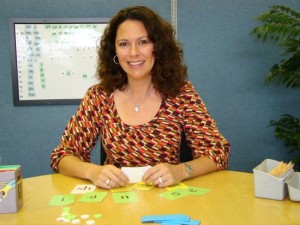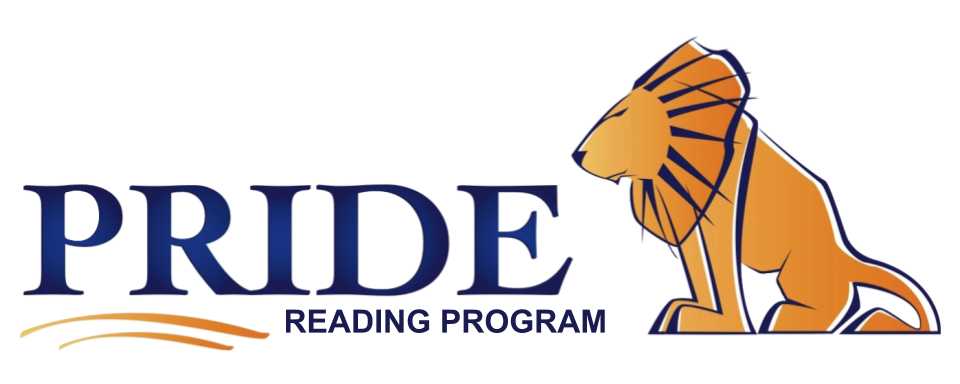
by PRIDE Reading Program Admin | May 26, 2016 | A PRIDE Post, Reading Comprehension
Is your child having difficulties with reading comprehension? Need a reading comprehension strategy that helps your child understand what they have just read?
Well, try using the SWBS reading comprehension strategy. It is our favorite reading comprehension strategy.
Somebody – Wanted – But – So
The SWBS is a fantastic and easy to implement reading comprehension strategy that helps children understand plot elements such as conflicts and resolutions. It also allows the child to summarize the elements of a story and develop the summary into a retelling of the story. It can be used as a “during reading” or “after reading” strategy. I also like to use it as a quick reading comprehension assessment with my students.
The SWBS reading comprehension strategy is basically a summarizing technique. Summarization requires a student to pull out the main idea, focus on key details, use key words and phrases, and break down the larger ideas. Summarizing is an extremely difficult task for most students. Many children require instruction and practice in summarizing before they are able to produce good oral and written summaries of text. The SWBST strategy helps children first orally summarize what they have read and then put the summary down onto paper into paragraph form. It works with both fiction and nonfiction text. So here is how it goes:
Somebody – Wanted – But – So
Procedure:
1. Have your child read a story (independently or with help is fine)
2. Write down the following:
Somebody…
Wanted…
But…
So…
3. Fill in the sentences together with your child relating to the story that they just read. Somebody relates to the character of the story. Wants is the goal or motivation that the character exhibits. But refers to the conflict in the story. So is the resolution of the conflict. Do it first orally then in written form.
4. Have your child write out the sentences in a paragraph form. Younger students can add just one sentence while older students can add detail with 1-3 sentences.
It is AWESOME – right? The key to getting your child to memorize this summary form is through repetition. Doing it just one time won’t work. Doing it all year long – it will “stick.” Good Luck and let me know how it goes…

Learn more about the New PRIDE Reading Program
___________________________________________________________________________________________
Karina Richland, M.A. is the Founder and Director of PRIDE Learning Centers, located in Los Angeles and Orange County. Ms. Richland is a certified reading and learning disability specialist. Ms. Richland speaks frequently to parents, teachers, and professionals on learning differences, and writes for several journals and publications. You can reach her by email at karina@pridelearningcenter.com or visit the PRIDE Learning Center website at: www.pridelearningcenter.com

by PRIDE Reading Program Admin | Apr 10, 2016 | A PRIDE Post, Reading Comprehension
Many students with Learning Disabilities process information differently. They may be unaware of simple reading comprehension strategies that strong readers use automatically, such as rereading passages they do not understand.
Students with learning disabilities typically recall less about stories they have read and cannot easily identify the important information in them. Here are a few reading comprehension strategies that can be used either at home or in the classroom to help students with learning disabilities comprehend and understand text.
Retelling
Retelling is a frequently used process that involves asking students to recall and restate the events in a story after they have read it or heard it. Teachers or parents should first model the different parts of the story for the student. For example, starting a story by saying “once upon a time,” and then prompting the student to retell the story by asking:
- Who is the story about?
- Where does the story take place?
- What is the main character’s problem?
- How does the main character try to solve the problem?
- How does the story end?
Theme Scheme
The use of a theme scheme during explicit instruction in reading comprehension will help students transfer the strategies they learn to novel texts. The Theme Scheme includes the following steps:
- Introduction and pre-reading discussion: The teacher defines the concept of THEME and introduces the background of the specific story for that lesson.
- Reading the story: The teacher reads the story aloud, stopping to ask questions designed to encourage the student to process the theme.
- Discussion: The teacher and student discuss the following questions:
- Who is the main character?
- What is the main character’s problem?
- What did the main character do about the problem?
- What happened next?
- Was that good or bad?
- Why was it good or bad?
- The main character learner that her or she should _____________.
- Apply the theme to other story examples and to real life experiences: The teacher introduces another story that provides another instance of the same theme. The teacher and student discuss the example using the above 7 questions plus:
- When is it important to ________?
- In what situation is it easy/difficult to ________?
- Review: The teacher reviews the above questions and asks the student to think about other examples.
A follow up activity: The teacher leads a follow-up enrichment activity, such as writing, drawing, discussion, or role- playing.
Predicting
In this activity, the teacher reads a story to the student or has them read the story aloud. The teacher stops the reader before getting to the story’s resolution. Then the teacher asks the student to predict what comes next in the unfinished story. Another option is that the teacher can provide a list of possible endings from which the student can choose.
Cloze Activity
The teacher removes a portion of text from the middle of a story and then has students fill in the missing information. To optimize the benefits of this approach, it is valuable to discuss the types of information that would be anticipated. For example, the teacher might remove the description of the problem faced by the characters in the story. The teacher then could show the student a story map and then ask the student what aspect of the map is not obvious in the story. The student can brainstorm possible problems that would make sense, given the other information presented in the story.
The above strategies are designed to enhance reading comprehension and have been used to teach students with learning disabilities, with promising results. Students struggling with reading comprehension can achieve gains, including the ability to transfer what they have learned to novel texts, when they are given highly structured and explicit instruction in reading comprehension.
Learn more about the New PRIDE Reading Program
________________________________________________________________________
Karina Richland, M.A. is the Founder of PRIDE Learning Centers, located in Los Angeles and Orange County. Ms. Richland is a certified reading and learning disability specialist. Ms. Richland speaks frequently to parents, teachers, and professionals on learning differences, and writes for several journals and publications. You can visit the PRIDE Learning Center website at: www.pridelearningcenter.com

by PRIDE Reading Program Admin | Jun 16, 2015 | A PRIDE Post, Reading Comprehension
For some children, reading comprehension help is just a frustrating, pointless exercise of reading words on a page. How can we help our children to become active, engaged and competent readers? This is not something that comes naturally to most children. It is something that needs to be taught and practiced. Here are a few strategies and techniques parents might use with their children for reading comprehension help.
Build Background Knowledge
The first step in reading comprehension help is connecting the child with the text. Before reading a text help the child build background knowledge. If the text is about the Himalayan Mountains, consider showing the child a visual representation of the terrain, landscape, etc. Ask them about the similarities and differences between the pictures they see and their own city and town. Building this background with information is critical in helping the children visualize what they are reading while they are reading it.
Teach the Student to Visualize as they Read
The next step in reading comprehension help is learning to visualize. During the reading, stop and ask the child questions relating to the reading. Ask them what did they see while they were reading and what did it look like, sound like, etc. By asking questions during the reading, you are giving the child a purpose for reading as well as focusing his or her attention on what they are reading.
Use Graphic Organizers
Another important element in reading comprehension help is using a multi-sensory approach. During the reading, have the child use a graphic organizer to help set the visualization of the text. For example, they could compare two characters from the story and decide how they are similar and different using their organizer. This keeps the child engaged and active, as well as gives them a purpose as they are reading through the text.
Discuss the Reading both Verbally and Written
Once the reading is complete, it is important for the parent to monitor the child to determine whether reinforcement is necessary. This can be accomplished through a variety of different activities – both orally and written.
• Create a story map with the child. Draw a vertical diagram with spaces for the child to fill in the names of the main characters, the story’s setting, and the main problem in the story, a few events, the resolution and the ending.
• Have the child retell the story or text in their own words.
• Write the words Who, What, Where, When, Why, and How on chart paper. Have the child answer these questions as they pertain to the story.
• Ask the child to draw parallels to what they have just read, and something they have read in the past.
A strong reader is not just someone who can read anything, read it fast and read it well. A strong reader is engaged and active in the reading. This reader therefore comprehends the text in many various skill levels. This is not something that usually comes naturally; this is something that needs to be taught. Motivate and guide your children through comprehension, make it fun, and make it lasting.
Learn more about the New PRIDE Reading Program
________________________________________________________________________________________________________________________

Karina Richland, M.A. is the Founder of PRIDE Learning Centers, located in Los Angeles and Orange County. Ms. Richland is a certified reading and learning disability specialist. Ms. Richland speaks frequently to parents, teachers, and professionals on learning differences, and writes for several journals and publications. You can visit the PRIDE Learning Center website at: www.pridelearningcenter.com

by PRIDE Reading Program Admin | Apr 19, 2015 | A PRIDE Post, Reading Comprehension
Reading comprehension is not an easy activity. In fact, it can be really hard work! Did you know that without proper interventions, 74% of the children who are poor readers in third grade remain poor readers in the ninth grade? Reading comprehension impacts all subjects in school including literature, science, social studies and even math. For students to do well academically, they must be able to comprehend the material they are reading. Reading research shows that good readers:
- are active readers and have goals in mind as they are working through a text.
- make predictions about what is to come
- look over the structure of the text before they read to determine which sections are the most relevant to their reading goals.
- read selectively, determining which sections to read carefully , which to read quickly, which not to read, and so on.
- construct, revise, and question the meanings they make as they read.
- try to determine meaning of unfamiliar words and concepts in the text.
- read various types of texts differently. In narrative, a good reader pays close attention to the setting and characters but in expository text, a good reader frequently summarizes what they have read.
- Feel a sense of satisfaction and productivity after reading a text
Research according to the National Reading Panel 2000, has proven that explicit and direct instruction is the core of good reading comprehension. Children need to learn to use comprehension strategies before, during and after they read. Here are a few research-based strategies that help students become active readers:
Predictions
Students are encouraged to generate expectations about what characters might do, or how the plot might evolve, based on their own experiences in similar situations. Making a prediction activates the student’s prior knowledge and therefore provides a foundation for any new information they will learn while reading. This prior knowledge facilitates their understanding of new ideas encountered in text. Researchers in the field of reading comprehension (Anderson, Wilkinson, Mason, & Shirey, 1990) found that prediction activities promoted overall story understanding if the predictions were explicitly compared to text ideas during further reading. Some activities that support predicting include:
- read the title of the book and discuss what clues about the story does the title provide
- discuss the illustration on the cover and ask student what it makes them think of
- discuss if this is a real or make-believe story
Think-aloud
Think-aloud involves making one’s thoughts audible and saying what you are thinking while you are reading. This strategy has been shown to improve students’ comprehension when both students themselves engage in the think-aloud and when teachers also use think aloud while reading to students. A study by Bereiter and Bird (1985) showed that students who were asked to think aloud while reading had better comprehension than students who were not taught to think aloud, according to a question-and-answer comprehension test. Another study by Silven and Vauras (1992) demonstrated that students who were prompted to think aloud as part of their comprehension training were better at summarizing information in a text than students whose training did not include think-aloud. An example of a think aloud goes something like this:
The teacher reads a section of a text and talks out loud to the children to show that he/she is engaged and reading actively.
- “This reminds me of a time when I…”
- “I wonder why…”
- “I know about this topic because I…”
Story Structure
Story structure involves how stories and plots are organized. Essentially every reader is taken down a path with characters, a setting, some sort of activity or conflict and a resolution. Understanding this structure of the story or plot is conducive to understanding and deriving meaning from literature. It enables the child to organize in his or her mind what exactly they are reading. Some activities that support story structure include:
- create and fill out a chart detailing the four parts of a story, including the characters, plot, conflict, and resolution.
- draw or write a comic strip recreating the story
- Use a graphic organizer or story map to chart out the structure of the story
Visualization
Visualization involves picturing in your mind what is happening in the text. This can help transform students from passive readers to active readers while simultaneously improving their reading comprehension. By vividly visualizing the events depicted in the text, creative readers allow themselves to become part of the story; they see the colors, hear the sounds, feel the textures, taste the flavors, and smell the odors the writer describes. The more the students practice this strategy, the more automatic it becomes during reading. Some activities that support students in visualizing include:
- sketch a picture while reading or listening to a descriptive story.
- look at wordless picture books and then write the words that would create the pictures in the books.
- dramatize a story
Summarization
To summarize a student needs to be able to pull out the main idea, focus on key details, use key words and phrases, and break down the larger ideas. Summarizing is an extremely difficult task for most students. Many children require instruction and practice in summarizing before they are able to produce good oral and written summaries of text. Some activities that support summarizing include:
- take articles from a newspaper and cut off the headlines and then have students write their own headlines of the story.
- with different colored highlighters have students underline key words, phrases, vocabulary and ideas that are relevant to understanding the text.
- use a graphic organizer with Who, What, When, Where, Why, and How.
Success in school and beyond depends in great measure upon the ability to read with strong comprehension. When students make connections to the text they are reading, their comprehension increases. Good readers constantly try to make meaning out of what they read by seeing how it fits with what they already know. When we help students make those connections before, during, and after they read, we are teaching them critical comprehension strategies that the best readers use almost instinctively.
Learn more about the New PRIDE Reading Program

Karina Richland, M.A. is the Founder and Director of PRIDE Learning Centers, located in Los Angeles and Orange County. Ms. Richland is a certified reading and learning disability specialist. Ms. Richland speaks frequently to parents, teachers, and professionals on learning differences, and writes for several journals and publications. You can visit the Pride Learning Center website at: www.pridelearningcenter.com

by PRIDE Reading Program Admin | Jul 8, 2014 | A PRIDE Post, Autism, Reading Comprehension
Reading comprehension help for students with autism may requires a few strategies that YOU the parent or teacher can easily do at home or in the classroom. Studies consistently show that children who are encouraged to use visual imagery have improved performance on tests of comprehension and recall of materials. For many children with autism, this skill of using mental imagery in text is an extremely challenging task. Nevertheless, this method can be taught and mastered.
Reading Comprehension help for students with autism involves VISUALIZATION. This is one of the most effective ways to help improve reading comprehension in a child with autism. How do you teach this? Well …. try to encourage the child to form mental pictures of the events described in the stories read.
TEACHING VISUALIZATION…
An autistic child struggling with reading comprehension will benefit from a teaching method geared to make sure that he understands and thinks about word meaning as he reads and that provides a specific scheme for visualizing. For example, a teacher might stop a student after reading a few lines and encourage the student to form a mental picture with a question such as “what do you think that looked like?” This allows the student to build imagery directly related to the concepts conveyed in the reading and at the same time to continue to focus on the printed symbols on the page.
- Use prior knowledge and pre-reading strategies. “Look at the title. Think about what the story might be about.”
- For stories, the student can visualize what is happening at the beginning, middle, and end of the story. “Read or listen to the first few sentences. Remember to get a picture in your head for each sentence. Do not continue until you get a moving picture in your head, kind of like a movie.”
- For informational text, student can think about key words and visualize the content they are learning. “Read or listen to this paragraph. Remember to get a picture for each sentence. Ask me if you do not understand a word.”
- Students should be asked to explain their images. “Can you describe what you see as you are reading.”
- Students should compare the picture in their minds with what they are reading. “Tell me as much information as you can remember.””
Integrating the child’s own artwork with story reading, such as having the child draw a map or diagram of events, or represent the story in cartoon form, is also useful. They can also read an entire passage and then create an illustration that represents the main idea of the paragraph. To help the child decide which ideas are most important, provide them with some guidelines: “If this story were to be made into a movie, which scenes absolutely must be included for the story to make sense. Which scenes would be funny, sad, etc.”?
Reading Comprehension help for students with autism involves your help and guidance in teaching visualization strategies. Good Luck – and let us know how they worked!
__________________________________________________________________________________________________

Karina Richland, M.A. is the Founder of PRIDE Learning Centers, located in Los Angeles and Orange County. Ms. Richland is a reading and learning disability specialist and speaks frequently to parents, teachers, and professionals on learning differences. You can reach her by email at karina@pridelearningcenter.com or visit the PRIDE Learning Center website at: www.pridelearningcenter.com








